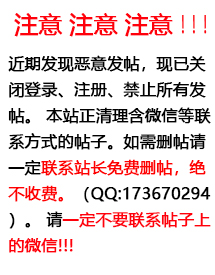


China macro:Comments on PBoC's mini rate hike and Nov macro data
Summary: We take the mini rate hike as a tightening measure. The MLFlending today is also muc...



Summary: We take the mini rate hike as a tightening measure. The MLFlending today is also much lower than it was last year. We expect moretightening measures in H1, including further mini rate hikes, to achieve financialdeleveraging. PBoC today raised interest rates in its open market operations (OMOs) by 5bps. 7-day repo, 28-day repo, and 1-year MLF rates were raised to 2.5%, 2.8% and3.25%, respectively, from 2.45%, 2.75% and 3.2%. Before this mini hike, PBoChad kept OMO rates unchanged for nine months. We take PBoC's move on OMO rates as a tightening signal. While this move wascertainly well synchronized with the Fed rate hike, Fed rate hike in itself does notnecessitate a PBoC rate move (PBoC's OMO rates were unchanged during the Fedrate hike in June). The PBoC statement today pointed out that the gap betweenpolicy rates and market rates had already widened too much in China, hence therate hike was necessary to narrow the gap. This statement suggests the PBoCwill likely conduct more mini rate hikes in 2018, as 5bp only narrowed the gapslightly (Figure 1). Interest rate remains a near term risk (see our recent note onrisks). Our rates strategist Linan Liu expects a total of 25-50 bps increase in OMOrates between now and end 2018 (see her recent note). PBoC liquidity injections have also reduced compared to last year. Net liquidityinjection from MLF was only 170bn so far in Q4, compared to 1,500bn in Q4 2016(Figure 2). The MLF shortfall was only partially offset by 500bn more liquidityinjection from repos. The overall reduction in liquidity injection and the shorteningof liquidity injection durations both suggest tighter monetary conditions. We thinkthis is appropriate given the policy priority of financial deleveraging. Monetary developments are in line with the broader policy picture. UnderPresident Xi's second term, policy focus will be more on sustainability andquality, and less on speed. The Politburo meeting last Friday, which set the tonefor economic policy in 2018, put "control risks and lower leverage" as the topchallenge for 2018, followed by fighting poverty and reducing pollution. Weexpect next week's Central Economic Work Conference to firm up this overallpolicy message and provide more details on fiscal and monetary stances for 2018. Economic activity indicators released today suggest continued modest growthin Nov. Fixed asset investment (FAI) growth dropped by another 0.1ppts to 7.2%yoy ytd. Industrial production growth edged down to 6.1% from 6.2%. Retail sales growth rebounded to 10.2% from 10%, thanks to seasonal online sales events,but slightly fell short of market expectations of 10.3% (Figure 3). Fiscal support to growth is fading. On-budget fiscal revenue growth turnednegative in Nov (-1.4% yoy), compared to 5.4% in Oct. The revenue shortfall islargely owing to a 12.5% decline in property sales related taxes (Figure 4). Fiscalspending growth fell further to -9% yoy in Nov, after turning negative in Oct. On monetary front, total social financing growth fell to 12.5% from 13%, whileM2 growth rebounded to 9.1% in Nov from 8.8% in Oct (Figure 5). This suggestthat credit to the real economy remained modest; higher bank loans are likely dueto banks bringing off-balance-sheet shadow banking assets back to their balancesheet, and should not be interpreted as rebound in real lending activities. As a surprise on the upside, property market rebounded in Nov. Property salesgrew 13% in Nov from -1.7% in Oct (Figure 6). Housing new starts rebounded to5% 3mma yoy from 0.7%. Government land sales revenue also grew by 23% yoy. These developments added some uncertainty to the property market outlook. Ourbaseline remains that the property market will cool down in the next 6 months, asprices moderate, policy continues to tighten in tier 3 cities, and mortgage ratesincrease. Overall, Nov data is in line with our expectations that the economy is slowingdown in Q4. We maintain our GDP forecast of 6.6% for Q4. Growth willslow further to 6.3% in 2018, driven by tightened macro policies and financialdeleveraging, downward property cycle, as well as longer term structural trends(see our 2018 Outlook for more details).
声明:如本站内容不慎侵犯了您的权益,请联系邮箱:wangshiyuan@epins.cn 我们将迅速删除。
 热词推荐
热词推荐
MORE+
- 1出台政策必须来真的,只要不务正业,连续两年没有盈利的,或有盈利没有分红的(正业科技300410)
- 2长江证券的人气飙升,都在憧憬周一的开盘,一字板和数板等论调不绝如耳,这是人心思涨(长江证券000783)
- 3长江证券有翻倍行情,不是现在,现在只是第一步计划,下面的计划是怎样把原来的第一大(长江证券000783)
- 4中核科技机构扎堆这里转融通,中小投资者谨慎操作,以静制动:牢牢记住,只要被机构转(中核科技000777)
- 5市场资金就那么多,美股港股都是前车之鉴,今后趋势,大量个股会成为仙股无人(中核科技000777)
- 6对《广发证券》周五走势的复盘与预判(广发证券000776)
- 7其实这个股确实挺悬的,毕竟业绩一直不怎么准,还官司缠身。但是退市的概率确实不大,(通葡股份600365)
- 8最近主力小资金砸盘!低位抄的买进发现没拉升占不到便宜又反手卖出[大笑][大笑][(通葡股份600365)
- 9钉子户也算我一个,赔赚都一直持有。(通葡股份600365)
- 10他只是挣的加工费而已,铜和金涨价跟他没有关系,你看清楚他的报表里面利润率(江西铜业600362)
- 11哎呀,看着你们的评论真有意思,首先呢是涨是跌,你们也说的不算。其次是停牌一天。假(华微电子600360)
- 12大家不宜过分恐慌,反正现在恐慌也没用了,年初进的几家救市大机构,开盘就能把逃生门(华微电子600360)
- 13就说一句:属于龙胜的时候就快来临四月到五月底如股价不到十元看到帖子的任何人都可以(浙江龙盛600352)
- 14话说华夏幸福800多亿的一级土地整理全是成本价,可没有从公开市场上拿地。你说华夏(华夏幸福600340)
- 15白云山股息率为2.5.平安银行股息率为3.35白云山股价为30平安银行股价为42(白云山600332)
- 16闲聊几句宏达股份的重组易主问题,现在宏达有2个重组案子,一个是蜀道为了四川信托这(宏达股份600331)
- 17满市场都是没有涨的业绩不错的股,在这个位置买一个故事已经基本讲明白的股,(宏达股份600331)
- 18算力上游重要突破 更快更节能的光子芯片来了 速度提升1000倍(天通股份600330)
- 19市场逐步认可了天通的铌酸锂!(天通股份600330)
- 20我重仓天通但是真的要说一句话这个票上市这么多年不涨就是量化做空用基本面害人。实控(天通股份600330)
- 21铌酸锂材料唯一核心受益股-天通股份(天通股份600330)
- 22达仁堂是最好的长线投资标的。原因1:投资达仁堂的75%的散户都是长线持有,比较坚(中新药业600329)
- 23中国股民很牛B的,能把机构给洗出去.底部要筹码,所以万科的小作文就来了.(华发股份600325)
- 24我想问个问题,年报是不是披露过了,你就说还有啥雷,一季报亏损吗?这也叫雷?你们担(国栋建设600321)
- 25后知后觉也是一种策略(亚星化学600319)
- 26新力金融股票价格图像欣赏及预判(新力金融600318)
- 27持股农发14个月的心酸,今年是时候说再见了(农发种业600313)
- 28平高走势与A盘有关联,但又相对独立。(平高电气600312)
- 29你对本周三天的走势怎么看?(平高电气600312)
- 30泰和科技,突发多条重磅利好:一季度业绩公告大幅增长,同时推出员工持股计划,叠加公(万华化学600309)
- 上海贝岭股吧
- 浙大网新股吧
- 华东科技股吧
- 隧道股份股吧
- 深赛格股吧
- 光大银行股吧
- 中国银行股吧
- 永鼎股份股吧
- 苏州高新股吧
- 新安股份股吧
- 精达股份股吧
- 中国医药股吧
- 东风科技股吧
- 金健米业股吧
- 西部资源股吧
- 招商银行股吧
- 中联重科股吧
- 中国宝安股吧
- 中集集团股吧
- 德赛电池股吧
- 复星医药股吧
- 宇通客车股吧
- 中国建筑股吧
- 葛洲坝股吧
- 大唐电信股吧
- 华丽家族股吧
- 罗牛山股吧
- 中色股份股吧
- 京东方A股吧
- 新疆天业股吧
- 天坛生物股吧
- 抚顺特钢股吧
- 锦龙股份股吧
- 云天化股吧
- 振华科技股吧
- 国中水务股吧
- 华发股份股吧
- 飞乐音响股吧
- 青岛双星股吧
- 中国核电股吧
- 中国中铁股吧
- 西部矿业股吧
- 时代新材股吧
- 科达股份股吧
- 士兰微股吧
- 浦发银行股吧
- 中金黄金股吧
- 哈投股份股吧
- 航天晨光股吧
- 同仁堂股吧
- 维维股份股吧
- 福耀玻璃股吧
- 新五丰股吧
- 中航资本股吧
- 中金岭南股吧
- 丰原药业股吧
- 四环生物股吧
- 哈药股份股吧
- 万向钱潮股吧
- 中国高科股吧


